Ola Electric Scooters, 2022: A Complete Guide to Ola Electric Scooters

Ola Electric Scooters, 2022: A Complete Guide to Ola Electric Scooters
Few people know of the Bengaluru-based ride-sharing business Ola. Ola taxis have become our preferred choice ever since they started operating in all of India’s main cities. Ola is one of the most well-known ride-sharing firms, ranking alongside the US-based Uber as one of the top providers of vehicles and rental alternatives for customers.
Ola, the top mobility platform in India, was formed in 2010 and has since simplified its ride-booking and car-rental services as well as its various modes with a focus on its consumers to support its development. Now that Ola has decided to support sustainable development, it has developed its original idea for “e-scooters,” or what we refer to as “electric scooters.” Ola Electric was established in 2017 and is poised to rule the globe with its distinctive electric vehicles.
Its co-founders are Ankit Jain, Anand Shah, Bhavish Aggarwal, and Ankit Bhati. Except for Bhavish Aggarwal, all the co-founders have since resigned from their positions and finally left the company. In addition to serving as the company’s founder and CEO, Ola Electric’s CEO is also the company’s founder. Keep this article close at hand if you’ve heard of them and are interested in learning more about electric scooters.
In it, we cover everything you could want to know about them, including how to book an Ola electric scooter, how much an Ola E vehicle costs, how much an Ola Electric scooter costs in Bangalore, how far they can go, what they are made of, how to charge them, how to protect yourself while riding one, and more.
Why does the Ola electric scooter resemble a “revolution on two wheels”?
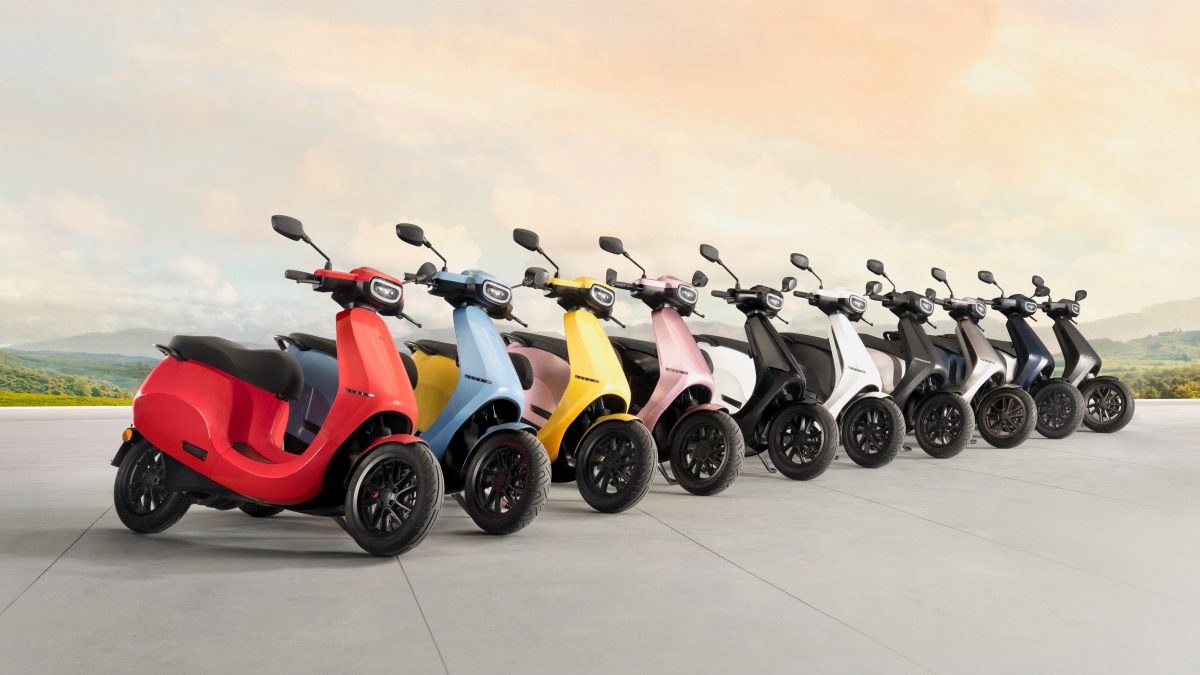
Yes, the development of Ola electric scooters will undoubtedly aid in the dissipation of people’s attention away from the growing expenses of fossil fuels and all the gloomy notions regarding the depletion of our fossil fuel sources and the like. Ola Electric is undoubtedly a groundbreaking concept, as implied by its tagline. “Ready or not, a revolution is coming” is the motto for the Ola electric scooter, coupled with the inspiring hashtag #JoinTheRevolution.
The three main characteristics of the Ola electric scooter are as follows:
Big on Acceleration – The Ola electric scooters would be equipped with acceleration that would make other vehicles envious and allow riders to maintain a lead on the road.
High on handling – These motorcycles not only offer fantastic acceleration, but they also guarantee excellent handling on every terrain.
More excellent trunk room – Ola Electric cars also have a huge boot that can fit two helmets and other essential items you might require while riding.
The Entity’s Creation
Ola stated that its electric scooter manufacturing facility would operate independently from its ride-sharing division. Under ANI Technologies, there are two distinct lines of business; the first will continue to be a ride-hailing service, while the second will create and distribute electric scooters.
Built, colour options, features, and pricing
According to Ola, its electric scooters will be offered in two variations: the entry-level Ola S1 and the top-of-the-line Ola S1 Pro. Scooters with starting pricing of Rs 99,999 and Rs 1,29,999, respectively, have previously been introduced by the business.
In 2020, Ola electric revealed that the Ola electric scooter was based on the Etergo Appscooter after acquiring Etergo BV. The organization has already implemented the Etergo platform for usage in India to provide more excellent performance. It’s lovely to report that the Ola electric scooters roll on 12-inch black alloy wheels after looking at their characteristics. The car’s design has a simple, elegant look that eliminates unnecessary redundancy.
A twin-pod LED headliAnother feature of the Ola electric scooters is an LED strip wrapping around it. Another feature o also includes single-sided telescopic front suspensions, horizontally mounted rear shock absorbers, and slotted front and rear disc brakes. The scooter’s footpegs for the passenger fold flush into the car’s bodywork, and the passenger’s grab grips at the back end in clear-lens taillights. Additionally, it is stated that these scooters had the most excellent boot area ever when they were first released; the boot can fit two half-face helmets and still have room for additional items.
Ola bikes’ batteries are not the kind that can be switched out. The conventional charging mechanism will be used instead. At-home charging for the Ola S1 Pro takes 6 hours and 30 minutes, whereas it takes 4 hours and 48 minutes for the Ola S1 to reach 100%.
The S1 model and S1 Pro models of the Ola electric scooter have 121 km and around 181 km of riding range, respectively, for each charge. In addition, the latter has the Hyper Mode, which the earlier model does not. However, according to sources, the Ola S1 Pro will have a range of 135 kilometres at full charge, which is the actual range of these scooters, in December 2021. The mobility colossus’s originally stated scope was clarified as the range of the E-scooters exclusively under test circumstances.
According to reports, Ola’s electric scooters will include a 7.0-inch TFT colour display with built-in navigation, onboard diagnostics, and other entertainment features. This display will run the Android operating system.
Initial colour possibilities revealed by Ola were matte black, matte pink, and matte sky blue. The S1 Pro model, however, is presently available in 10 distinct colours, including:
- Midnight Blue
- Matt Black
- Millennial Pink
- Liquid Silver
- Anthracite Grey
- Porcelain White
- Neo Mint
- Marshmellow
- Jet Black
- Coral Glam,
In contrast, the S1 model of Ola Electric scooters is offered in 5 colours: Marshmellow, Midnight Blue, Coral Glam, and Porcelain White.
Ola electric scooters may be charged in what ways?
By using the portable 750 W charger included with the Ola Electric scooter, Ola Electric car owners can charge their scooters using a standard 5A outlet. A “Hypercharger” charging station is another place where you may set the device. The business has previously said it will first open scooter charging stations in more than 100 locations, eventually expanding that number to more than 400.
Before the anticipated test drives of the Ola electric vehicles slated on November 10, 2021, the first Ola Electric Hypercharger was introduced on October 25, 2021. According to reports from November 20, 2021, the S1 test drives of the cars have already begun and drawn positive feedback throughout the nation. In addition, Bhavish Aggarwal, c too-founder and CEO of Ola, has decided to expand the test rides to more than 1000 cities by December 15, 2021, after seeing the positive reception that the Ola S1 scooters have received.
Ola Electric has teamed with the Israeli battery manufacturer StoreDot to create lithium-ion replacement batteries for drones and electric cars due to its investment in StoreDot.
With the help of this collaboration, Ola Electric hopes to give its EVs incredibly quick-charging batteries that can be charged from zero to one hundred per cent in only five minutes mentioned above and is set on entering the Indian battery manufacturing market shortly.
In what country are the Ola Electric Vehicles made?
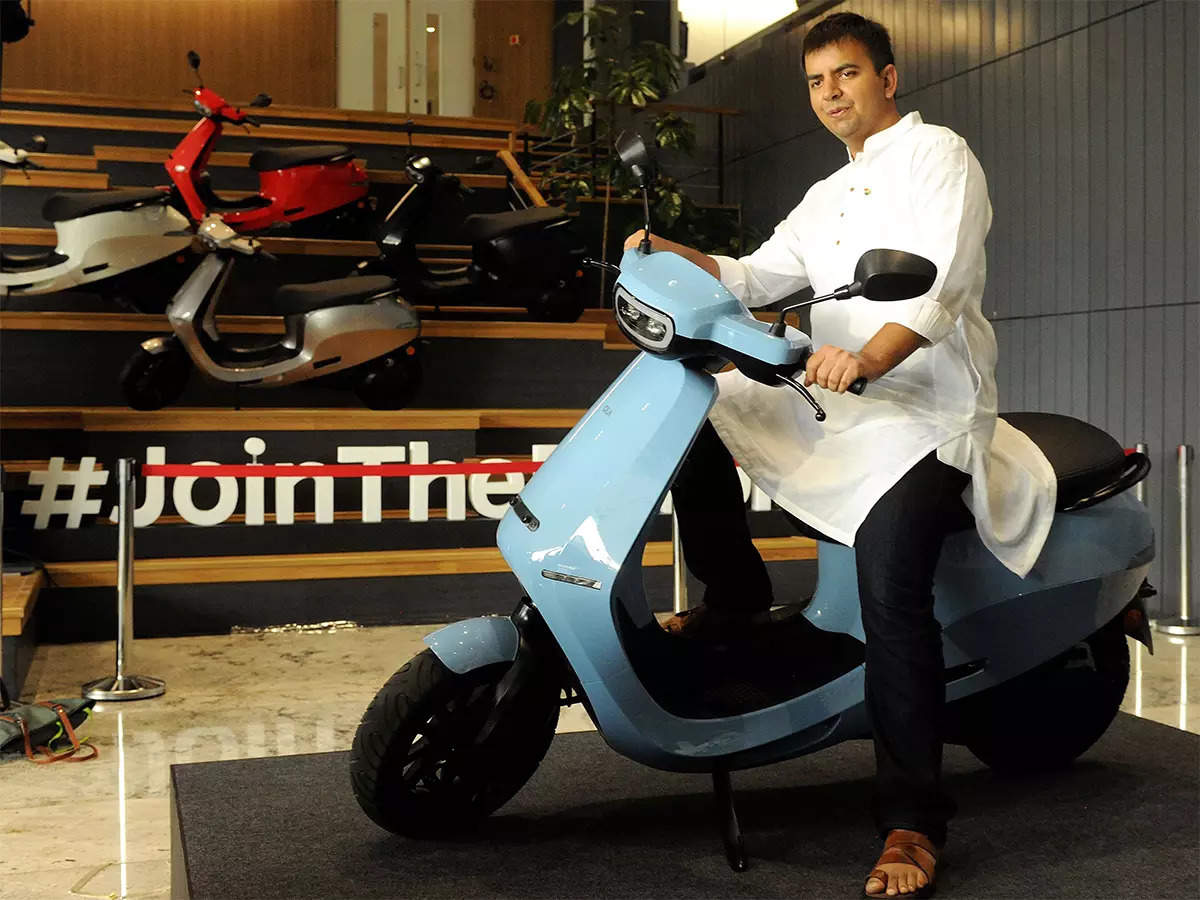
The electric cars of Ola are now produced in its electric scooter facility in Tamil Nadu, which will increase production to 10 million vehicles by the end of 2022 from its current capacity of 2 million yearly.
Yes, Ola Electric is now constructing its plant, known as OLA FutureFactory, in Tamil Nadu. Ola FutureFactory is touted as the world’s most sustainable two-wheeler factory since it has a carbon footprint of zero, 100 acres of forest cover, and 2 acres of forest inside.
The 10 million units annual production capacity of the Ola facility will be supported by over 3000 AI-powered robots, including precision robot welding, a state-of-the-art automotive paint shop, 100% in-house battery manufacture, and more. The FutureFactory of Ola will produce more than 25,000 motors daily, making it the most state-of-the-art two-wheeler factory in the world.
With the capacity to produce one car every two seconds, the Ola FutureFactory in Krishnagiri, Tamil Nadu, is thought to be the biggest 2-wheeler factory in the world.
The plant’s first phase is almost finished. On February 10, 2022, Ola’s FutureFactory celebrated one year after the opening of its manufacturing plant.
Being the first such project in the history of Indian autos, the Ola factory’s staff is exclusively made up of women, one of this FutureFactory’s most distinctive features. The Ola FutureFactory, which has a capacity to employ 10,000+ women, has 2000+ women working there when it celebrated one year in business. This Ola effort takes the potential for women to lead industries one step further. To power its production and save electricity costs, Ola may put up a solar rooftop.
What are Ola’s electric scooter prices?
Initially, the Ola e-scooters were promised to be reasonably priced on the website of the Indian multinational ride-sharing firm. According to people close to Ola, the estimated pricing for these scooters was around the Rs 1 lakh level.
Prices for the S1 and S1 Pro variants were eventually revealed to be Rs 99,999 and Rs 1,29,999, respectively. Among the competition in this car pricing range is the Bajaj e-Chetak, the Ather 450X, and the TVS iQube.
Take a look at the current costs according to the Ola Electric website:
Ex-Showroom Prices in India
- Gujarat
Ola S1- INR 79,999
Ola S1 Pro- INR 1,09,999
- Delhi
Ola S1- INR 85, 099
Ola S1 Pro- INR 1,10,149
- Rajasthan
Ola S1- INR 89,968
Ola S1 Pro- INR 1,19,138
- Maharashtra
Ola S1- INR 94,999
Ola S1 Pro- INR 1,24,999
- The other Indian States
Ola S1- INR 99,999
Ola S1 Pro- INR 1,29,999
As we can see, the cost of an Ola E car differs according to the state, with Gujarat having the lowest ex-showroom costs. All other states, including Karnataka, West Bengal, Bihar, and Andhra Pradesh, will also provide Ola vehicles with beginning costs of INR 99,999throughouthe ones, as mentioned earlier. Now, if you’re searching for the Ola electric scooter pricing in Bangalore, you may expect to pay at least INR 99,999.
How can I reserve a scooter from Ola?
You don’t need to worry any longer if you want to learn more about OLA Electric bike booking and buy one of these vehicles since specific simple steps will make reserving an Ola scooter hassle-free.
How to book an OLA scooter online may be done in the following simple steps:
- You must first go to Ola Electric’s official website, www.olaelectric.com, and then click or touch on the “Reserve for Rs 499” icon in the top-right corner of your screen.
- You must now input your mobile number, click the captcha verification box to confirm it, and then select the Next option by clicking or tapping the button.
- You will receive an OTP on your cellphone number, which you must enter and choose by clicking or tapping the Next button.
- Then a dialog box will appear with the message “Total Payable – Rs 499” and three payment options: debit/credit card, unbanked payment interface, and net banking.
- Next, you must select your chosen payment method; after you have, the payment gateway will be forwarded to you.
- The last page states, “Congrats, you are now part of the revolution,” which will appear once you have completed the payment and confirmed your Ola reservation.
- The order ID and other information will be sent to the specified email address and cellphone number as soon as the payment has been completed.
Founders and Team
Initially, Ola Electric named Ankit Jain, Anand Shah, Bhavish Aggarwal, and Ankit Bhati as its founders; however, when everyone else departed the business, Bhavish Aggarwal became the only founder of the business as of May 12, 2022. 2019 saw the departure of Ola Electric’s initial founder, Anand Shah. Ankit Jain, a close friend and confidant of Bhavish accepted this resignation. August 2020 saw Jain leave the business. 2020 saw the departure of Ankit Bhati as well.
- Bhavish Aggarwal
Ola Electric and Ola were created by Bhavish Aggarwal, who also served as the brains of Ola. The co-founder and CEO of Ola and Ola Electric is a B.Tech engineer from IIT Bombay. Before founding Ola, I worked at Microsoft as a research assistant and research intern.
Wayne Burgess, a seasoned Jaguar designer who served as the Design Director of Jaguar Production and SVO Cars, has already been brought on board by Ola. Ola intends to make its vehicles stand out in terms of design, giving them a universal appeal. In addition, Ola intends to introduce a domestically produced vehicle to enter the market for electric four-wheelers. With Burgess serving as the team’s vice president of design, the vehicle’s design will receive a significant boost.
Funding of Ola Electric Mobility
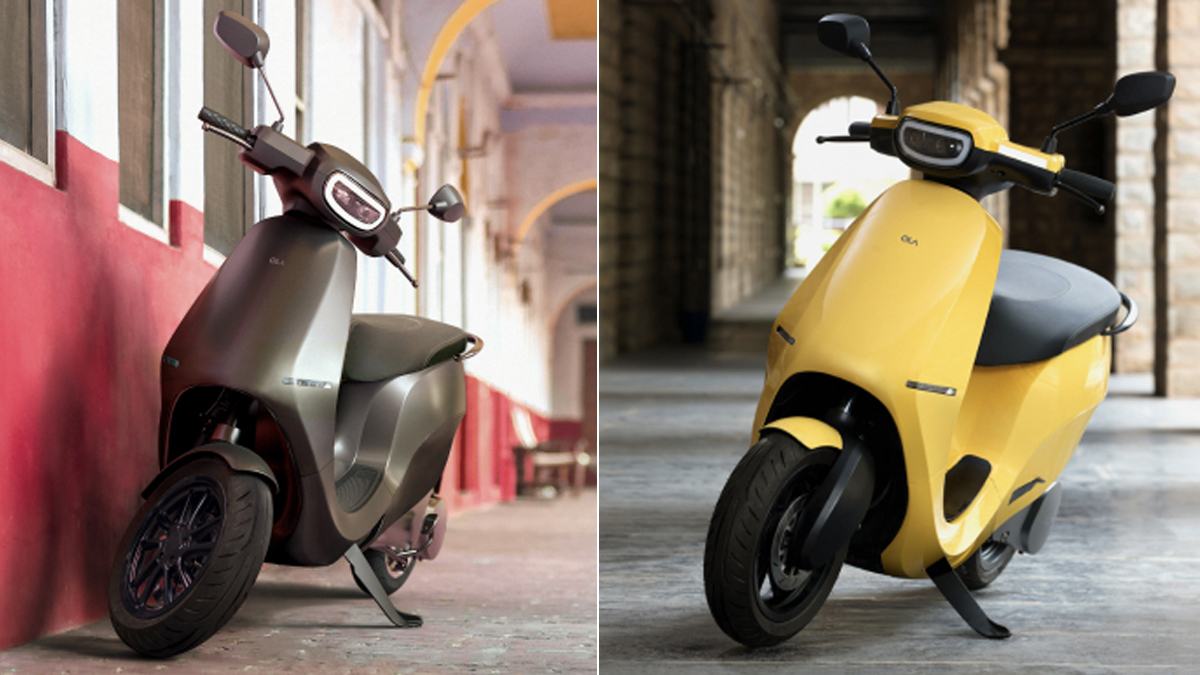
The Ola company that makes Ola Electric scooters, Ola Electric Mobility, has collected a total of $861.9 million throughout nine investment rounds, with the support of 19 investors.
Leaders in the automotive industry, including Softbank, Tata Sons Private Limited, Matrix Partners India, Tiger Global Management, Hyundai Motor Company, Kia Motors, and others, are among Ola Electric Mobility’s investors.
The electric scooter business Ola hopes to raise $1 billion in the following months. The company has already begun working with JP Morgan, a network of equity companies, financial investors, strategic traders, and other significant investors, to channel the funds from equity firms and overseas investors.
To begin the first stage of building the largest two-wheeler manufacturing, the business has already received $100 million from the Bank of Baroda in July 2021.
On October 1, 2021, Ola Electric got close to $200 million from Falcon Edge, Softbank, and others to increase its worth to $3 billion. Its additional vehicle platforms, including electric motorbikes, mass-market scooters, and electric vehicles, will be developed with the help of the most recent funding.
The business is still seeking investment for its future $200 million funding round, headed by a few US-based bluechip tech funds in addition to its current investors. According to reports, this will increase the four-year-old business Ola Electric’s worth by more than 60% to $5.
The business has finally been able to raise the money it needed. According to sources dated January 24, 2022, Ola Electric secured more than $200 million from a group of investors, including Tekne Private Ventures, Alpine Opportunity Fund, Edelweiss, and others, to increase its valuation to $5 billion.
According to reports dated December 8, 2021, Ola Electric has raised money totalling Rs 398 crore from several investors, including Vijay Shekhar Sharma, who invested Rs 75 crore through VSS Investco; Farhan and Zoya Akhtar, who invested roughly Rs 21 crore and Rs 10.7 crore; and Ritesh Sidhwani, who contributed Rs 21.4 crore along with investors Edelweiss, IIFL, and others.
In the following months, this investment may potentially arise. By issuing 371 Series C compulsory convertible preference shares (CCPS) to Temasek, angel investor Rahul Ravindra Raj Mehta, IIFL, Edelweiss, and several other investors, the EV manufacturing division of OLA also hopes to generate around $53 million. As of December 7, 2021, Ola Electric is valued at over $5 billion following these most recent fundraising rounds.
Over nine investment rounds, OLA Electric has raised more than $860.2 million. On January 24, 2021, Ola Electric secured more than $200 million in its final investment round.
Growth
Ola Electric has reached several notable milestones since it began accepting reservations in July 2021. Some of them can be encapsulated as
- Sales for Ola Electric totalled Rs. 1100 crore in just two days.
- When it sold more than 9,000 units in March 2022, surpassing Hero Electric’s record, it was recognized as the best-selling electric 2-wheeler ever.
- In April 2022, Ola Electric sold more than 12689 scooters, making it the top-selling manufacturer of electric two-wheelers in India.
- According to information from June 25, 2022, Ola has sold 41,024 units.
Manufacturing Batteries

Ola Electric is discussing with various international vendors to establish a battery cell manufacturing facility in India since it would be producing batteries for its scooters. According to sources from June 8, 2022, the battery production facility would have a capacity of up to 50 gigawatt hours (GWh). Such a factory will have production costs of about $1 billion. The battery production facility’s initial capacity, which would subsequently be enhanced, might be 1 Gwh.
Ola Electric may get its products from vendors in Korea, Japan, Germany, and other nations. According to estimates, Ola Electric would require 40 GWh of battery capacity to power ten mn correctly. The corporation and a few other businesses got incentives as part of the Production Linked Incentives (PLI) program, under which the Indian government declared an investment of about $2.4 billion. This government-sponsored program intends to increase the domestic production of advanced chemistry cell (ACC) batteries.
Records for pre-sale reservations and sales of Ola electric scooters
On July 15, 2021, Ola made it possible for users to make reservations. As a result, anyone eager to get the highly anticipated e-scooters and wants to beat their friends to the punch may pay a refundable deposit of Rs 499.
According to a report from July 17, 2021, more than 1 lakh electric vehicles from Ola have been pre-booked, with the number of reservations growing per second.
Regarding the website’s condition in August 2021, orders for Ola electric bikes were scheduled to begin on September 8, 2021, and the firm planned to begin shipping the items in October 2021.
The company added that Ola scooter deliveries would perhaps commence in October 2021, and S1 Pro vehicle purchases would start on September 8, 2021. Ola S1 and S1 Pro booking had already begun back then, and you can still find it active on both their website and the Ola app today.
However, the website’s creator could not fix technical issues that prevented Ola S1 scooters from being purchased on the specified day. On September 8, 2021, the website that would serve as a one-stop shop for digital transactions and assist users through a completely paperless loan application procedure wasn’t operational.
Bhavish Aggarwal, co-founder, and CEO of Ola, issued an apology for the problematic experience the company’s consumers had to endure on Twitter and changed the purchase date to September 15 at 8 am. He also informed consumers in the checkout line that their reservations would not alter.
On September 15, 2021, when the Ola e-scooter purchase first became available, Bhavish Aggarwal announced that Ola Electric had sold four scooters every second, for a total of more than Rs 600 crores in just one day. According to a tweet by Bhavish Aggarwal, co-founder of Ola Cabs, the overall sales on Day 2 were even better:
By the beginning of 2022, Ola plans to export its electric scooters to the US as part of its global trade. Bhavish Aggarwal, the company’s CEO, has said, “will soon! We will start delivering to the US by the beginning of next year, we said in response to US-based entrepreneur Vivek Wadhwa’s tweet that the Ola Electric scooters were “the Tesla of Scooters” and that he “would love to buy one here in Silicon Valley.” However, due to the global scarcity of semiconductors, Ola was forced to move forward with the delivery of electric cars from October to November 2021.
The first batch of deliveries of the company’s e-scooters, which were previously scheduled to take place between October 25 and November 25, 2021, has now been postponed to December 15–30, according to reports from November 22, 2021.
Investments
StoreDot, a Tel Aviv-based firm that is creating and producing batteries, has received investment from Ola Electric to replace the lithium-ion component of batteries.
Name of the Company- StoreDot
Date of Investment- March 21, 2022
Funding Round- Corporate Round
Lead Investor- Yes
Challenges
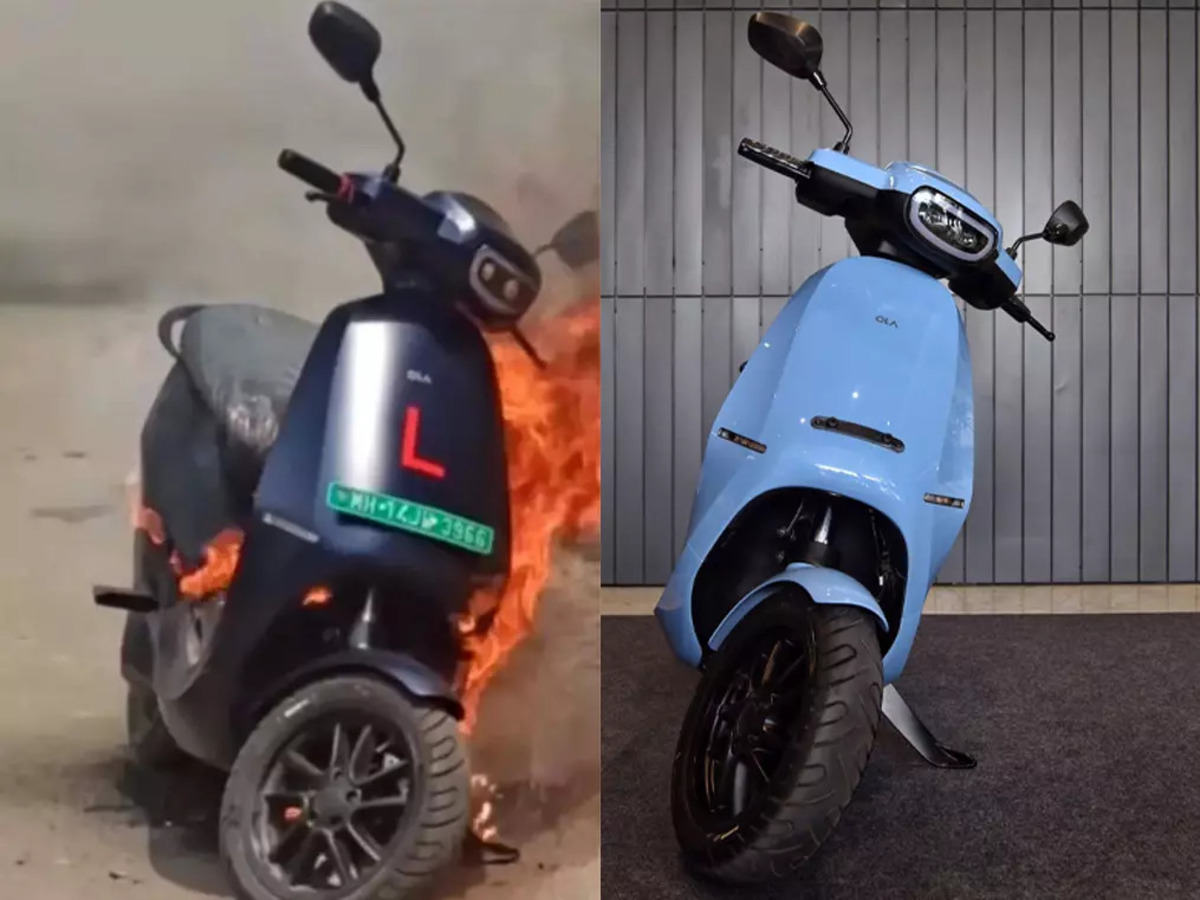
With its scooters, Ola has taken on a significant task by attempting to change the vehicles and the fuel that powers them. The fire accidents that the car manufacturer saw in March 2022 are just one of the numerous obstacles Ola Electric has had to overcome in its quest to popularise EVs. The EV behemoth has so far faced the following notable difficulties:
- Sales Drop Due to Ola’s New Payment Model,
Ola Electric initially provided its clients with numerous payment windows that opened on four special days and allowed them to pay in 4 instalments. However, the producer of electric vehicles changed that payment scheme to a one-time total payment approach on May 28, 2022, requiring consumers to make a single, complete payment for their vehicles. Since then, this modification has affected Ola Electric sales.
According to reporting from June 25, 2022, Ola has only sold 130–200 units in the last two weeks. The total number of vehicles sold in May decreased by 27.3 per cent MoM to 9230 units, even though this model enables the firm to provide its worker’s discounts of INR 10,000. On June 25, 2022, Ola sold 41,024 automobiles this year.
- Fire Incident in Pune
In March 2022, an Ola Electric car caught fire in Pune. The firm had to return 1441 motorcycles to diagnose them and examine their general health, including their batteries, heating, and safety systems. As a result, there was widespread panic and worry among everyone.
- Accident in Guwahati
Ola Electric has received more criticism in the wake of the fire incident from the son of Twitter user Balwant Singh, who claimed that he purchased an Ola S1 Pro for his son and that it was involved in an accident on March 26, 2022. He claimed that the regenerative braking mechanism was at blame for this mishap.
In response, Ola Electric shared the telemetry data to demonstrate that the scooter was in perfect working order and that the accident resulted from speeding up and braking suddenly. Additionally, it made an official announcement on its Twitter account about the telemetry data.
- Data and privacy violations involving customers
Ola Electric immediately came under fire for collecting customer data and disclosing it without their knowledge after publishing the comprehensive telemetry report and pertinent graphs showing that Balwant Singh’s kid exceeded the speed limit and had an accident. As a result, Balwant Singh sent an email to Ola Electric asking permission to remove his son’s telemetry data. Although Ola’s subsequent actions were unknown, it is questionable if the telemetry data can genuinely be regarded as a customer’s personal private information.
On May 12, 2022, the situation involving Balwant Singh’s kid reportedly gained new attention after Ola Electric allegedly contacted Singh and demanded that he remove the unfavourable comments on social media within 24 hours or else face legal repercussions. The company’s prior assertion that it hadn’t violated data privacy supported its answer.
- Ola Electric Resignations
On May 8, 2022, Ola saw a different high-profile departure. Dinesh Radhakrishnan is the following individual to come after Arun Sirdeshmukh, the CEO of Ola Cars. As Ola Electric’s chief technology officer, Radhakrishnan oversaw the company’s vital engineering operations.
Brand ambassadors, advertising, and more for Ola Electric
Ola Electric has already seen excellent pre-booking success and is constantly changing its marketing tactics to draw in the current generation of clients. To support the Ola scooter marketing plan, the firm is focusing on all the media outlets that are currently accessible, including print, web, and traditional media. Bhuvan Bam, a singer, musician, actor, and one of India’s most well-known YouTubers known for his channel “BB ki Vines,” has already been signed on by the firm as its brand ambassador to appeal to the younger demographic of customers.
The contract under which Bhuvan Bam was employed on August 27, 2021, states that the well-known Youtube personality would work with the producers of electric scooters to produce fun and outlandish material centred around the cutting-edge Ola Electric scooters.
Future Plans
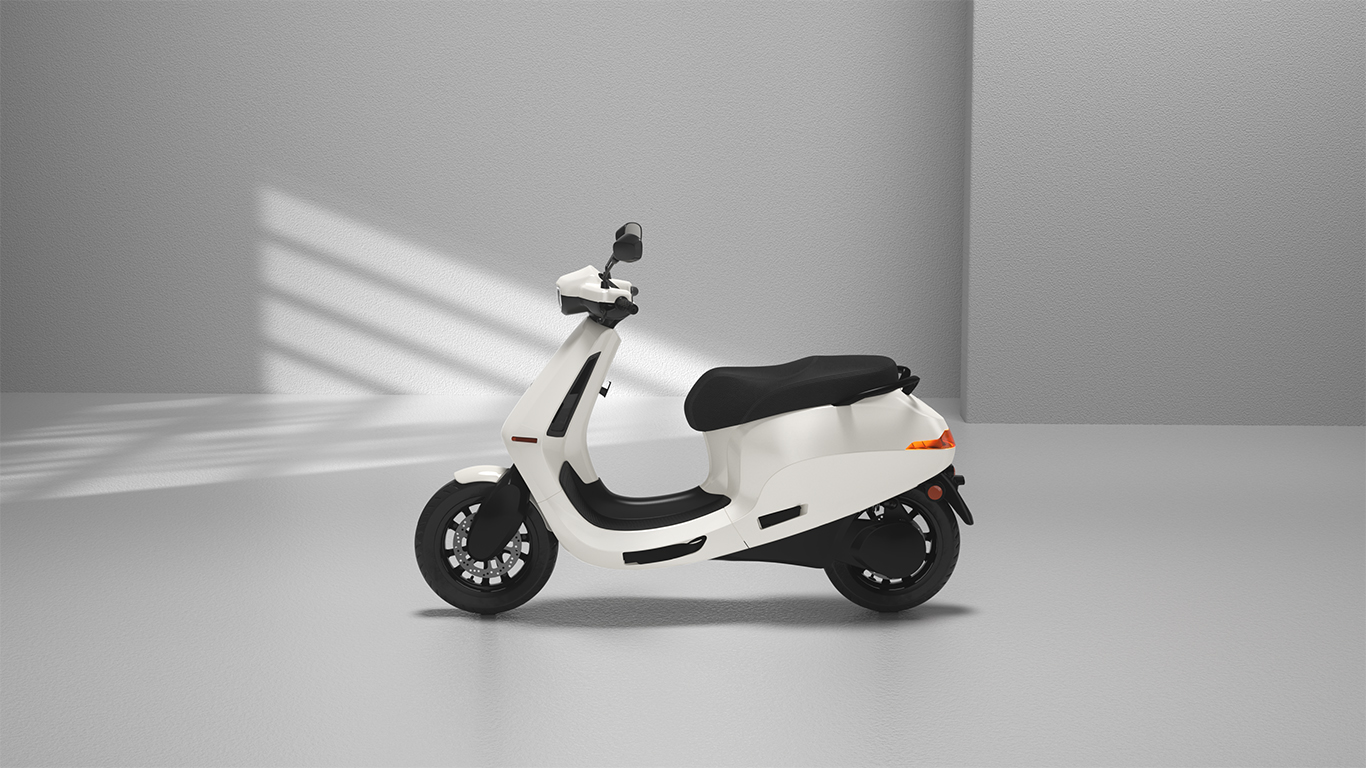
Ola Electric intends to introduce an electric vehicle in 2024. Ola Electric plans to develop its 50 gigawatt-hour battery production facility in India. The firm that makes electric two-wheelers will also invest in producing innovative cells and batteries.




